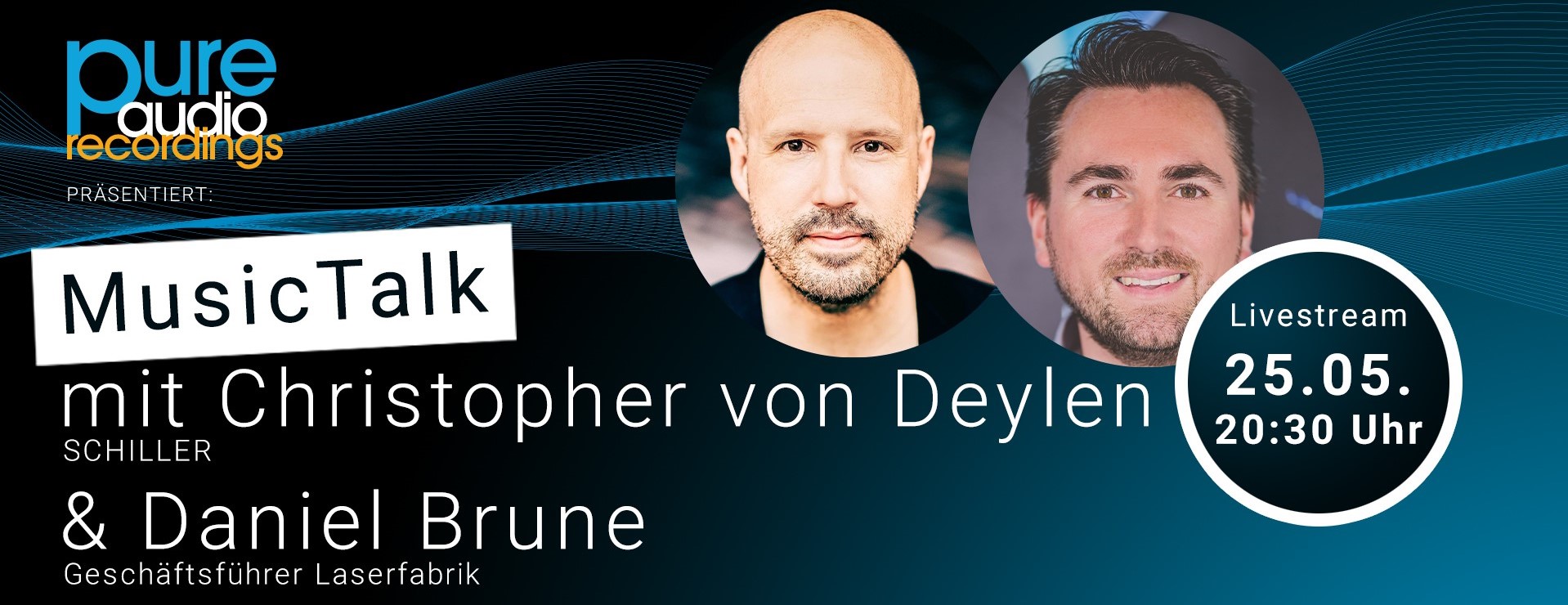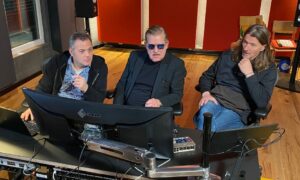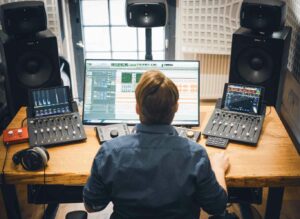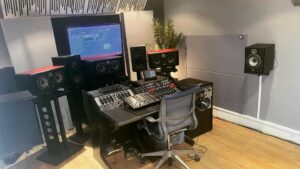
We are joined again by Christopher von Deylen aka Schiller in our livestream – this time together with laser show expert Daniel Brune from laserfabrik. The two of them collaborated for Schiller’s Arena Tour, creating a unique experience of audio and visual.
In addition to the show with Schiller, laserfabrik has for example also organized laser shows for The Voice of Germany, festivals such as Parookaville and Tomorrowland, or the David Guetta show at the Louvre, making them one of the world’s leading companies for lighting and laser technology, as well as special effects applications.
Schiller already mentioned in our last conversation how important lighting and effects are to his shows, because they allow him to better reach and emotionally pick up the space and the audience in it.
Diese Wirkung hat auch der immersive Klang, den wir auf den Blu-rays mit Dolby Atmos festhalten – bei Produktionen wie Schillers “Summer in Berlin” auch visuell begleitet von Licht- und Lasereshows. So we’ re looking forward to a conversation about the interplay between music and light in live concerts and video recording.
Christopher and Daniel met in 2017 at the LEA awards ceremony in Frankfurt and together they tackled the question: “How can you try to bring music and lasers even closer together?” This resulted in the live show for “Berlin Moscow”, which can also be experienced on Schiller’s album “Summer in Berlin” in Dolby Atmos.
Previously, Christopher had been rather critical of lasers, since he had only been familiar with them as a show effect similar to the confetti cannon for a long time – until he met laserfabrik, who focus their laser shows especially on live music in concert and at festivals.
Now, Christopher is excited about how lasers can bring the color and mood from the stage to the audience. Daniel explains:
"Lasers are inherently a 3D medium, the laser beam creates spaces."
For Daniel, what was special about the project with Christopher was that laserfabrik given the freedom to creatively unfold in what was initially a completely empty space. When asked, “What other technology is there?” he got a simple “Nothing” in response. That’s because Christopher assumed that the less conventional light there is in the room, the more room there is for the laser:
"Great possibilities emerge when you give the laser space."
In order to transfer the special and unusual atmosphere into the laser show, Daniel first had to try out basic structures that would work in the room and with the music. Only then, he explains, can details and color coordination be taken care of.
Very little of the laser show was pre-programmed – laserfabrik knew only the musical moods of “Berlin Moscow” for rough orientation. Instead, the lasers were as live as the music, creating a unique live moment.
With this trust in the other person that the expectations and ideas for the project would be met or even exceeded, both sides allowed themselves enough freedom to surprise each other with things that the other had not expected.
Daniel speaks of laserfabrik’s great strength in reacting spontaneously and responding to the emerging mood of a live show. This in turn is responded to by the musicians, who perceive the changing atmosphere created by the lasers and translate it into their music. From this a dialogue between music and lasers emerges, creating a unique moment of sound, visuals and atmosphere.
However, Christopher also mentions the difficulty of finding the right balance of not wanting it to be too perfect so as not to ” ruin” the spontaneous mood. That’s why they played and recorded the piece “Berlin Moscow” twice.
Christopher describes the feeling of performing his music in the laser room as “dreamlike”:
"You feel as if you're surrounded by a laser shell and you always think, you can touch it!"
Daniel tells us that for this small space that was available, they used a uniquely large number of lasers, he estimates about 60, and even multiplied them again by mirrors. This allowed unique light images without disturbing the artists or cameras.
Because Daniel also explains that lasers are still very dangerous and you have to be especially careful not to hit anyone in the eyes. Also, depending on the location, one must consider airport proximity and the surrounding nature and, before harming animal or human beings there, accept technical restrictions.
Christopher and Daniel announce a new Schiller andlaserfabrikproject coming soon, which is already in the making, and Christopher concludes by sharing his thoughts on the interesting, insightfulMusicTalk:




